-
 Bitcoin
Bitcoin $108,270.9768
2.07% -
 Ethereum
Ethereum $2,489.8066
2.50% -
 Tether USDt
Tether USDt $1.0004
0.01% -
 XRP
XRP $2.2035
0.66% -
 BNB
BNB $661.6608
2.32% -
 Solana
Solana $150.6425
2.13% -
 USDC
USDC $0.9999
-0.01% -
 TRON
TRON $0.2810
0.90% -
 Dogecoin
Dogecoin $0.1645
3.05% -
 Cardano
Cardano $0.5743
4.91% -
 Hyperliquid
Hyperliquid $38.8419
-0.15% -
 Bitcoin Cash
Bitcoin Cash $504.3134
-2.64% -
 Sui
Sui $2.8096
4.35% -
 Chainlink
Chainlink $13.3095
2.21% -
 UNUS SED LEO
UNUS SED LEO $8.9469
0.33% -
 Avalanche
Avalanche $17.9231
3.93% -
 Stellar
Stellar $0.2340
0.74% -
 Toncoin
Toncoin $2.8458
3.21% -
 Shiba Inu
Shiba Inu $0.0...01158
3.47% -
 Litecoin
Litecoin $86.0738
1.94% -
 Hedera
Hedera $0.1507
2.99% -
 Monero
Monero $319.8544
2.31% -
 Polkadot
Polkadot $3.4081
1.95% -
 Dai
Dai $1.0000
0.01% -
 Bitget Token
Bitget Token $4.5645
0.91% -
 Ethena USDe
Ethena USDe $1.0002
0.00% -
 Uniswap
Uniswap $7.2959
5.27% -
 Aave
Aave $272.4623
2.90% -
 Pepe
Pepe $0.0...09680
2.96% -
 Pi
Pi $0.4955
0.78%
How to set up multi-signature after the Ethereum wallet address is generated?
Adding multi-signature functionality to an existing Ethereum wallet requires using third-party tools or smart contracts, offering enhanced security but demanding careful consideration of threshold signatures and key management best practices.
Mar 16, 2025 at 02:30 am
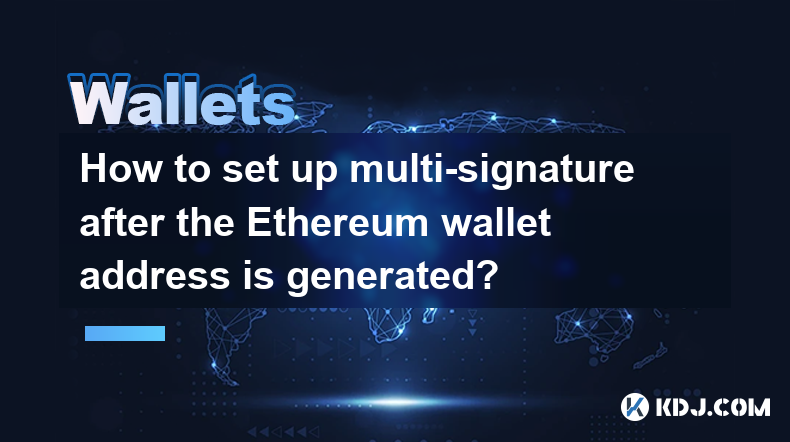
Key Points:
- Ethereum multi-signature wallets enhance security by requiring multiple private keys to authorize transactions.
- Setting up a multi-signature wallet post-address generation involves using third-party tools or smart contracts.
- Different multi-signature wallet solutions offer varying levels of complexity and features.
- Understanding the implications of threshold signatures and key management is crucial.
- Security best practices are essential to mitigate risks associated with multi-signature wallets.
How to Set Up Multi-Signature After the Ethereum Wallet Address is Generated?
Generating an Ethereum wallet address is just the first step. For enhanced security, many users opt for multi-signature (multisig) functionality. This requires more than one private key to authorize transactions, thus significantly reducing the risk of unauthorized access. However, setting up multisig after address generation necessitates using external tools or deploying smart contracts. It's not a built-in feature of standard wallet creation.
One popular method involves utilizing third-party multisig wallet services. These platforms offer user-friendly interfaces and manage the complexities of multisig transactions behind the scenes. They typically require you to import your existing Ethereum address and then add other participants to the multisig configuration. The specific steps vary depending on the chosen service.
Another approach involves interacting directly with smart contracts. This requires a more technical understanding of Ethereum and Solidity programming. You would deploy a multisig contract, specifying the required number of signatures for transaction authorization and the addresses of the authorized parties. This approach provides maximum customization but requires significant technical expertise.
Let's consider a common scenario: you've already generated your Ethereum address using MetaMask or a similar wallet. Now you want to add multisig capabilities. You'll need to choose a suitable multisig solution. Many platforms exist, each with different features and levels of security. Some offer a simple interface, while others provide advanced features like time-locked transactions or multi-level approvals. Thorough research is crucial before selecting a provider.
The process generally involves importing your existing Ethereum address into the chosen multisig wallet service. This often requires providing your private key or seed phrase. Remember, this step requires extreme caution. Only use reputable services and ensure secure storage of your private keys. Never share them with anyone.
Once your address is imported, you'll typically be prompted to add other participants to the multisig configuration. You'll specify the number of signatures required to authorize transactions (the threshold). For instance, a 2-of-3 multisig setup requires two out of three authorized signers to approve each transaction.
After adding participants and setting the threshold, the multisig wallet is ready to use. Transactions will now require the specified number of signatures before they are broadcast to the Ethereum network. This adds a layer of security, making it significantly harder for a single compromised key to drain the wallet.
Choosing the correct threshold is critical. A higher threshold (e.g., 3-of-5) provides greater security but might hinder the ease of making transactions. A lower threshold (e.g., 2-of-3) offers greater convenience but reduces the security margin. Carefully consider your risk tolerance and the level of security needed before deciding on a threshold.
Remember, the security of your multisig wallet relies heavily on secure key management practices. Store your private keys offline, use strong passwords, and be wary of phishing attempts. Regularly audit the participants in your multisig setup to ensure no unauthorized individuals have access. Furthermore, always verify the smart contract code (if using a contract-based solution) before deploying it to the Ethereum network.
Common Questions:
Q: Is it possible to add multi-signature to an existing Ethereum wallet without using a third-party service?
A: Yes, this is possible by deploying a custom multi-signature smart contract and interacting with it using a compatible Ethereum wallet. However, this requires significant technical expertise in Solidity programming and Ethereum development.
Q: What are the security implications of using a multi-signature wallet?
A: While multisig wallets enhance security by requiring multiple signatures, they are not foolproof. Security still relies heavily on proper key management, the trustworthiness of the participants, and the security of the multisig solution itself. Compromised private keys or vulnerabilities in the chosen platform can still lead to loss of funds.
Q: Can I recover my funds if I lose access to all my multisig keys?
A: Recovery depends on the chosen multisig setup. If you've lost access to all required keys and there's no recovery mechanism in place (like a recovery address), recovering funds is extremely difficult, if not impossible.
Q: What are the transaction fees associated with using a multi-signature wallet?
A: Transaction fees are typically higher with multisig wallets compared to standard wallets because multiple signatures require more gas to process on the Ethereum network. The exact cost varies based on network congestion and the complexity of the transaction.
Q: What happens if one of the multisig signers refuses to cooperate?
A: If a signer refuses to cooperate, the transaction cannot be completed if their signature is required to meet the threshold. This is a significant risk consideration when setting up a multisig wallet. Choosing trustworthy participants is paramount.
Disclaimer:info@kdj.com
The information provided is not trading advice. kdj.com does not assume any responsibility for any investments made based on the information provided in this article. Cryptocurrencies are highly volatile and it is highly recommended that you invest with caution after thorough research!
If you believe that the content used on this website infringes your copyright, please contact us immediately (info@kdj.com) and we will delete it promptly.
- XRP Price Targets $2.40 After Descending Channel Breakout: Is $40 Next?
- 2025-07-03 08:50:12
- All Blacks' Loose Forward Conundrum: New Faces and Familiar Battles
- 2025-07-03 08:30:12
- Bitcoin's Wild Ride: Open Interest, Institutional Bets, and Billions on the Line
- 2025-07-03 08:30:12
- Bitcoin, Strategy, & Profit: MSTR's Crypto Playbook and Trump's Digital Diversification
- 2025-07-03 08:50:12
- INJ Price Bull Rally: Smashing Long-Term Resistance – Can It Last?
- 2025-07-03 09:10:12
- Robinhood, OpenAI, and Wallet History: A Tokenized Tale of Intrigue
- 2025-07-03 09:10:12
Related knowledge

Does Phantom wallet offer two-factor authentication (2FA)?
Jul 03,2025 at 09:00am
Understanding Phantom Wallet and Its Security FeaturesPhantom wallet is a widely used non-custodial cryptocurrency wallet that supports the Solana blockchain. It allows users to store, send, receive, and interact with decentralized applications (dApps) seamlessly. As security is a top priority for any crypto wallet user, security features like two-facto...

What is "rent" on Solana and how does it affect my Phantom wallet?
Jul 02,2025 at 08:35pm
Understanding 'Rent' on SolanaIn the context of Solana, the term 'rent' refers to a storage fee that users pay for maintaining data on the blockchain. Unlike Ethereum, where storage costs are paid once via gas fees during contract deployment, Solana implements a recurring cost model to ensure efficient usage of network resources. This means that any acc...
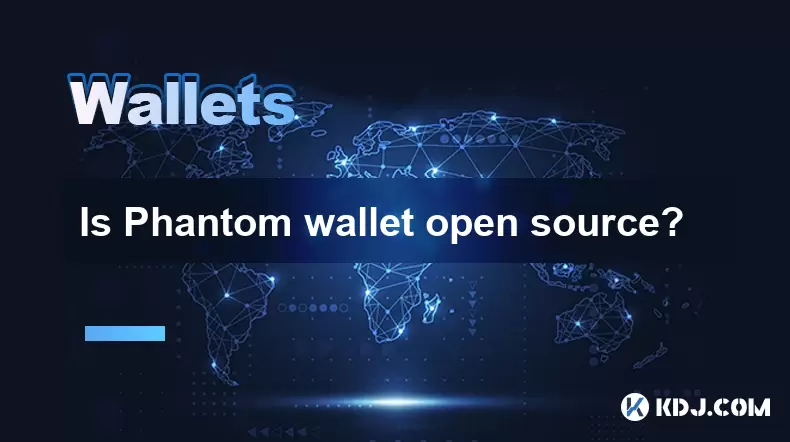
Is Phantom wallet open source?
Jul 03,2025 at 12:29am
What is Phantom Wallet?Phantom wallet is a non-custodial cryptocurrency wallet primarily designed for the Solana blockchain. It allows users to store, send, receive, and interact with decentralized applications (dApps) on the Solana network. The wallet is available as a browser extension and mobile application, offering a seamless experience for both be...
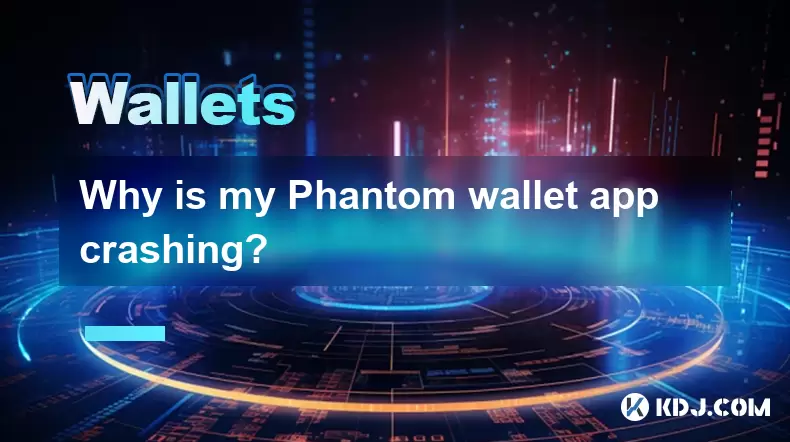
Why is my Phantom wallet app crashing?
Jul 02,2025 at 07:35pm
Understanding Phantom Wallet App CrashesIf you're experiencing issues with the Phantom wallet app crashing, you're not alone. Many users have reported similar problems, especially during high network activity or after recent updates. Phantom is a popular Solana-based wallet that allows users to store, send, and receive SOL tokens as well as interact wit...
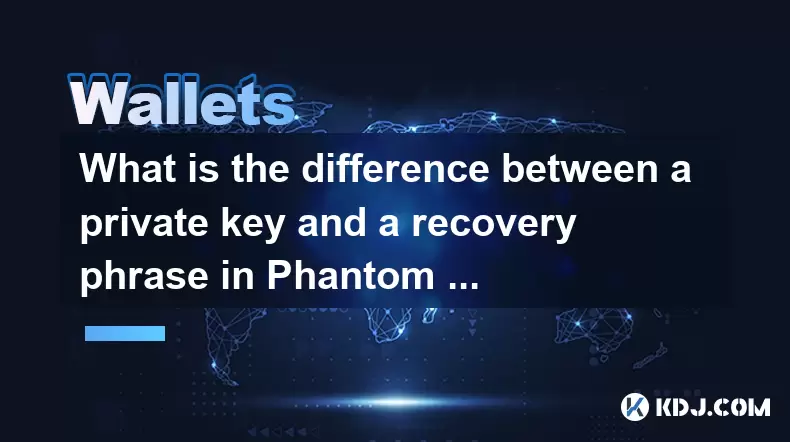
What is the difference between a private key and a recovery phrase in Phantom wallet?
Jul 02,2025 at 09:57am
Understanding the Basics of Phantom WalletPhantom wallet is a non-custodial digital wallet primarily used for interacting with the Solana blockchain. It allows users to store, send, and receive SOL tokens and other digital assets like NFTs. Non-custodial means that the user retains full control over their private keys and recovery phrases. Understanding...
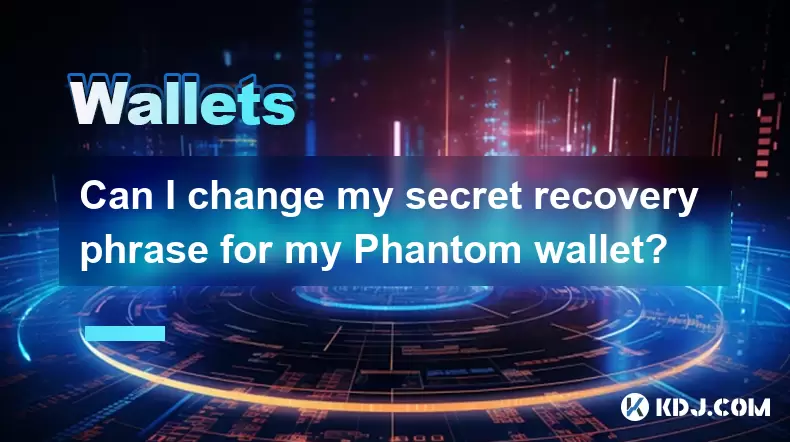
Can I change my secret recovery phrase for my Phantom wallet?
Jul 02,2025 at 12:07pm
Understanding the Role of a Secret Recovery PhraseThe secret recovery phrase, often referred to as a seed phrase, is a critical component in managing cryptocurrency wallets like Phantom. It serves as a backup mechanism that allows users to recover their wallet and associated assets if they lose access to their device or password. Typically, this phrase ...

Does Phantom wallet offer two-factor authentication (2FA)?
Jul 03,2025 at 09:00am
Understanding Phantom Wallet and Its Security FeaturesPhantom wallet is a widely used non-custodial cryptocurrency wallet that supports the Solana blockchain. It allows users to store, send, receive, and interact with decentralized applications (dApps) seamlessly. As security is a top priority for any crypto wallet user, security features like two-facto...

What is "rent" on Solana and how does it affect my Phantom wallet?
Jul 02,2025 at 08:35pm
Understanding 'Rent' on SolanaIn the context of Solana, the term 'rent' refers to a storage fee that users pay for maintaining data on the blockchain. Unlike Ethereum, where storage costs are paid once via gas fees during contract deployment, Solana implements a recurring cost model to ensure efficient usage of network resources. This means that any acc...

Is Phantom wallet open source?
Jul 03,2025 at 12:29am
What is Phantom Wallet?Phantom wallet is a non-custodial cryptocurrency wallet primarily designed for the Solana blockchain. It allows users to store, send, receive, and interact with decentralized applications (dApps) on the Solana network. The wallet is available as a browser extension and mobile application, offering a seamless experience for both be...

Why is my Phantom wallet app crashing?
Jul 02,2025 at 07:35pm
Understanding Phantom Wallet App CrashesIf you're experiencing issues with the Phantom wallet app crashing, you're not alone. Many users have reported similar problems, especially during high network activity or after recent updates. Phantom is a popular Solana-based wallet that allows users to store, send, and receive SOL tokens as well as interact wit...

What is the difference between a private key and a recovery phrase in Phantom wallet?
Jul 02,2025 at 09:57am
Understanding the Basics of Phantom WalletPhantom wallet is a non-custodial digital wallet primarily used for interacting with the Solana blockchain. It allows users to store, send, and receive SOL tokens and other digital assets like NFTs. Non-custodial means that the user retains full control over their private keys and recovery phrases. Understanding...

Can I change my secret recovery phrase for my Phantom wallet?
Jul 02,2025 at 12:07pm
Understanding the Role of a Secret Recovery PhraseThe secret recovery phrase, often referred to as a seed phrase, is a critical component in managing cryptocurrency wallets like Phantom. It serves as a backup mechanism that allows users to recover their wallet and associated assets if they lose access to their device or password. Typically, this phrase ...
See all articles

























































































